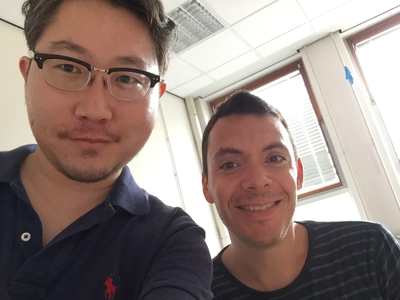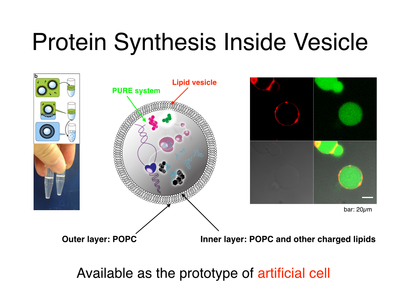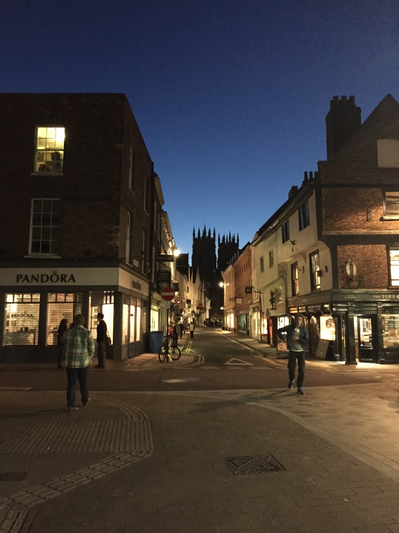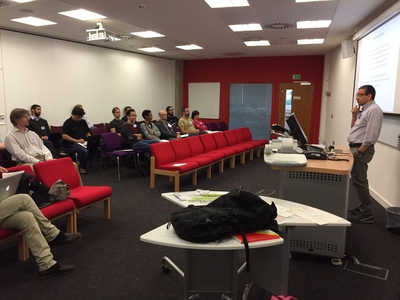ELSI Blog
108 Looking for Artificial Life in Delft and York
Escaping from the unbearable heat and humidity of Japan at this time of the year, I flew to the Netherlands and UK to visit a research lab and to attend a conference. The temperature in Europe this season was perfect and I had a productive time in both countries as well as a little vacation.
My first stop was Delft University of Technology, a 1-hour train ride from Amsterdam, to visit Dr. C. Danelon's laboratory. Dr. Danelon is a young independent Biology researcher overseeing many students and lab members. 
His research field is "The Minimal Cell" that consists of minimal kinds of molecules required to sustain the life of a cell, and also Origin of Life through the construction of the minimal cell. Since his group is focusing and applying an in vitro gene expression system (cell-free system), we shared experimental data and discussed present challenges.
Using the cell-free system, any protein or RNA can be produced from the genes of interests. For instance, if you add the DNA of GFP into the cell-free reaction mixture, after several hours, you will get the shining GFP protein. This cool biotechnology tool is available also within the space of lipid membrane vesicles, which are just like a soap bubble in water. These lipid membrane vesicles are fascinating objects because their size is almost equal to a real cell (several tens µm) and what they are doing inside is exactly the same as what our body cells are doing!

If this artificial cell can express a whole gene set of a cell, this would be a real living artificial cell (theoretically) created in a laboratory. However, as always, the story is not so simple. One of the basic problems is the lifetime of the cell-free system. In the present system, the gene expression activity will stop in about 3 hours. Danelon's group and I discussed the reason why it is so short. We know that one of the reasons is energy (ex. ATP) and substrate (ex. amino acids) depletions, but this is not the main reason. Another possible reason is an accumulation of the intermediate products, which might occupy the resources within the cell-free system or block other sub-reactions. Although we are still far from the definitive answer, we share an opinion that several unregulated reactions are causing this problem. This reason is not only one. The life system is complex...
After combining a short vacation in Amsterdam (I would love to go there every year, but perhaps not in winter), I flew to York in the UK to attend ECAL (European Conference on Artificial Life). This year, ELSI had a good presence at ECAL where the newly launched ELSI Origins Network (EON) was a sponsor and ELSI's Research Interactions Committee supported a workshop titled "Synthetic Biology and Artificial Intelligence" that my colleagues and I organized.

This workshop was the 4th of its series, each time focusing on how synthetic biology can contribute to the study of artificial intelligence, in more detail, how the minimal cognitive process can be embodied by means of artificial cell or synthetic biology. This difficult theme came about because of the backgrounds of the three organizers, Pasquale Stano (chemist), Luisa Damiano (theoretician), and myself (biologist). Being an interdisciplinary group of organizers, each time we invite a wide range of hot researchers from theoretical fields and wet biology, which always results in open and insightful discussions.

Fortunately, this time, with the support from ELSI, we were able to hold a vibrant meeting with many participants. Thank you, ELSI! We exchanged many ideas in the discussion session. One thought I had was, what would happen if an artificial cell can sense some chemicals or signals from their environment and then start a perturbation within the cell. Such perturbation may conduct internal biochemical reactions and, eventually, the cell may release another/other signals to the other individuals. This may be a hint of the embodiment of the cognition process within the synthetic biology approach.
In the main ECAL conference sessions, the talk by Dr. Filippo Caschera stuck to my memory. He talked about the construction of ribosome in a cell-free system. Because ribosome is a central cellular machine to produce protein, accomplishments of this research would be fundamental for the construction of self-reproduction. We are getting close to realizing the real living artificial cell.
After all this hot scientific excitement from Delft and York, now I am back in Tokyo to face one of the hottest summer streaks (a record breaking 5 consecutive days of the temperature being above 35°C!)











